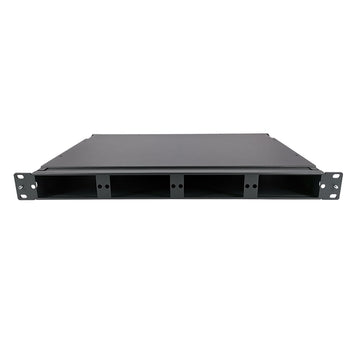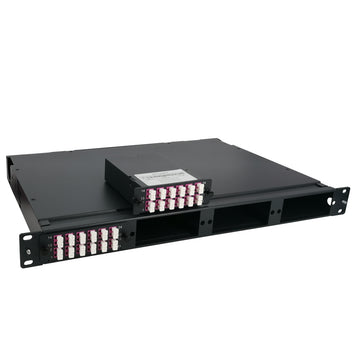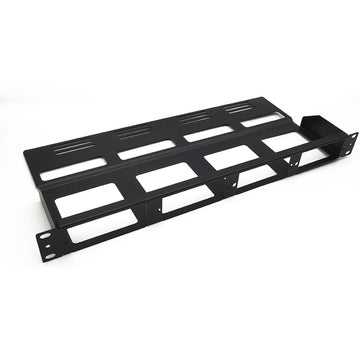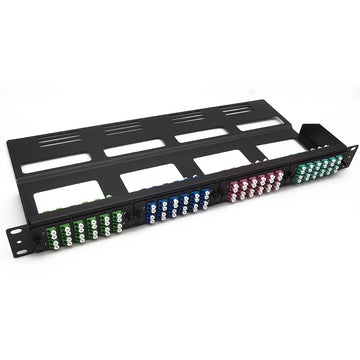Do You Know About Fiber Optic Splitter?
Do You Know About Fiber Optic Splitter?
In today's rapid development of optical networks, the appearance of fiber optic splitters helps users maximize the performance of optical network circuits. Optical splitters play an important role in passive optical networks such as EPON, GPON, BPON, FTTX, FTTH, etc. by allowing multiple users to share a single PON interface. So, what is optical fiber splitter? How can I find optical fiber splitter manufacturers when I need them?
What is optical fiber splitter?
A fiber-optic splitter, also known as a beam splitter, is based on a quartz substrate of an integrated waveguide optical power distribution device, similar to a coaxial cable transmission system. The optical network system uses an optical signal coupled to the branch distribution. The fiber optic splitter is one of the most important passive devices in the optical fiber link. It is an optical fiber tandem device with many input and output terminals, especially applicable to a passive optical network (EPON, GPON, BPON, FTTX, FTTH etc.) to connect the main distribution frame and the terminal equipment and to branch the optical signal.
How Does Fiber Optic Splitter Work?
In general, a optical splitter has many input and output terminals to attain the branch of the light beams, maximize the functionality of optical network circuits. The passive optical splitter can split, or separate, an incident light beam into several light beams at a certain ratio.
Specifically speaking, the passive optical splitter can split, or separate, an incident light beam into several light beams at a certain ratio. The 1x4 split configuration presented below is the basic structure: separating an incident light beam from a single input fiber cable into four light beams and transmitting them through four individual output fiber cables. For instance, if the input fiber optic cable carries 1000 Mbps bandwidth, each user at the end of output fiber cables can use the network with 250 Mbps bandwidth.

The optical splitter with 2x64 split configurations is a little bit more complicated than the 1x4 split configurations. There are two input terminals and sixty-four output terminals in the optical splitter in 2x64 split configurations. Its function is to split two incident light beams from two individual input fiber cables into sixty-four light beams and transmit them through sixty-four light individual output fiber cables. With the rapid growth of FTTx worldwide, the requirement for larger split configurations in networks has increased to serve mass subscribers.
Fiber Optic Splitter Types
Classified by Package Style
The optical splitter can be terminated with different forms of connectors, and the primary package could be box type or stainless tube type. Fiber optic splitter box is usually used with 2mm or 3mm outer diameter cable, while the other is normally used in combination with 0.9mm outer diameter cables. Besides, it has variously different split configurations, such as 1x2, 1x8, 2x32, 2x64, etc.
Classified by Transmission Medium
According to the different transmission mediums, there are single mode optical splitter and multimode optical splitter. The multimode optical splitter implies that the fiber is optimized for 850nm and 1310nm operation, whereas the single mode one means that the fiber is optimized for 1310nm and 1550nm operation. Besides, based on working wavelength differences, there are single window and dual window optical splitters—the former is to use one working wavelength, while the latter fiber optic splitter is with two working wavelengths.
Classified by Manufacturing Technique
FBT splitter is based on traditional technology to weld several fibers together from the side of the fiber, featuring lower costs. PLC splitter is based on planar lightwave circuit technology, which is available in a variety of split ratios, including 1:4, 1:8, 1:16, 1:32, 1:64, etc, and can be divided into several types such as bare PLC splitter, blockless PLC splitter, ABS splitter, LGX box splitter, fanout PLC splitter, mini plug-in type PLC splitter, etc.
To learn more about the optical fiber splitter or click on the image to view the product.
How to Choose the Right Fiber Optic Splitter?
In general, a superior fiber optic splitter needs to pass a series of rigorous tests. The performance indicators that will affect the fiber optic splitter are as follows:
- Insertion loss: Refers to the dB of each output relative to the input optical loss. Normally, the smaller the insertion loss value, the better the performance of the splitter.
- Return loss: Also known as reflection loss, refers to the power loss of an optical signal that is returned or reflected due to discontinuities in the fiber or transmission line. Normally, the larger the return loss, the better.
- Splitting ratio: Defined as the output power of the splitter output port in the system application, which is related to the wavelength of the transmitted light.
- Isolation: Indicates a light path optical splitter to other optical paths of the optical signal isolation.
Besides, uniformity, directivity, and PDL polarization loss are also crucial parameters that affect the performance of the beam splitter.
For the specific selections, FBT and PLC are the two main choices for the majority of users. The differences between FBT splitter vs PLC splitter normally lie in operating wavelength, splitting ratio, asymmetric attenuation per branch, failure rate, etc. Roughly speaking, the FBT splitter is regarded as a cost-effective solution. PLC splitter featuring good flexibility, high stability, low failure rate, and wider temperature ranges can be used in high-density applications.
For the expenses, the costs of PLC splitters are generally higher than the FBT splitter owing to the complicated manufacturing technology. In specific configuration scenarios, split configurations below 1×4 are advised to use FBT splitter, while split configurations above 1×8 are recommended for PLC splitters. For a single or dual wavelength transmission, FBT splitter can definitely save money. For PON broadband transmission, PLC splitter is a better choice considering future expansion and monitoring needs.
Lightoptics: a trusted optical fiber splitter manufacturers
Manufacturer of standard and custom fiber optic splitters. Planar lightwave circuit (PLC) ABS box type splitter modules, cassette type splitter modules, PLC single mode splitters, multimode fiber optic couplers/splitters and single mode dual window couplers/splitters.
LightOptics dedicates to design, develop and deliver reliable & intelligent Fiber Optic Connectivity solutions for the communication system. With years of experience serving customers worldwide, we offer a wide range of fiber optic connectivity products for the industrial, educational, medical, government and military sectors. A line of fiber optic cable assemblies, splitters, panels, adapters, connectors and cable management accessories.
Conclusion
Fiber splitters enable signals on an optical fiber to be split between two or more fibers. Since splitters contain no electronics and require no power, they are an integral component and are widely used in most fiber optic networks. Therefore, selecting fiber optic splitters to help increase the efficient use of optical infrastructure is key to developing a network architecture that will last into the future.













